For Ramesh Adhikari, MD, MS, FHM, a hospitalist with Franciscan Alliance in Lafayette, Ind., volunteering for SHM seemed like the right thing to do. “My motivation was to advance the field of hospital medicine and help other hospitalists as well as myself. It allowed me to grow professionally, meet hospitalists, and help bring them together.”
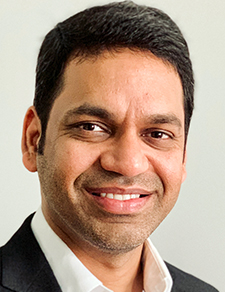
Dr. Adhikari
Dr. Adhikari serves on SHM’s digital learning committee and the editorial board of The Hospitalist. He’s participated in advocacy efforts, particularly around the permanent residency status of foreign-trained physicians. He helped found the Indiana Chapter of SHM and served as its vice president and president. He also chaired the planning committee for its first chapter conference—held virtually for two days in November 2020.
Like many of his colleagues, he’s conducted a peer review of an article submitted to the Journal of Hospital Medicine (JHM), an important way physicians can contribute to the field of medicine. “I have made many friends with hospitalists from different health systems and learned what they do and how they work as teams,” Dr. Adhikari said. “I have found mentors senior to me in this field, and I have mentored others. Overall, it has been a great experience to get involved in something outside of and beyond where I work.”
Celebrating volunteers
Volunteers support SHM in myriad ways, from serving on committees and the Board of Directors to participating in special interest groups (SIGS) and chapters. They also serve as educational and conference speakers, writers, editors, and reviewers for SHM’s publications—The Hospitalist and JHM.
“From a clinician perspective, SHM is almost entirely made up of volunteers, although well-supported by an excellent staff,” said Robert P. Zipper, MD, MMM, SFHM, physician advisor and senior policy advisor for Sound Physicians, a hospitalist company in Tacoma, Wash. “I think it’s safe to say SHM wouldn’t exist in its present form if not for the work of volunteers.”
And 2022 Volunteer Appreciation Week, April 17-23, is a good time to celebrate all the volunteers who make things happen at SHM.
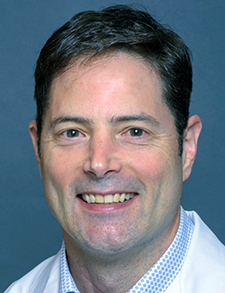
Dr. Zipper
Dr. Zipper, who’s been a hospitalist for 23 years, began contributing his time to SHM soon after joining the field. “Twenty years ago, it was an emerging organization for an emerging field. We had to constantly explain to people what a hospitalist was,” he said. “I applied for two committees and was surprised to be accepted for both. I’m still on SHM’s public policy committee, whose work I find fascinating—advocating for the field and for the patients we serve.”
He joined SHM’s Board of Directors a year ago—during the pandemic. “The board role is different than it used to be,” he said. “We’re not traveling like we used to. Our meetings are all virtual.”
Though everyone in the field feels overtaxed by the pandemic, it’s just as important and rewarding to volunteer now.
Just raising one’s hand becomes its own reward, making a huge difference to the volunteer, particularly over time, Dr. Zipper said. “My philosophy is to try to do things a little outside your comfort zone, but not too far. If the work is outside of your job description, even better. Anything that stretches you in that way can teach valuable lessons. There are skills you can really only develop by working on committees or other groups with a common goal. Leadership is taught, but not followership. How can I learn to be a better follower?”
Covering all the details
Nilam Soni, MD, MS, FACP, FHM is a professor of medicine and academic hospitalist at the University of Texas School of Medicine and the South Texas Veterans Health Care System in San Antonio, Texas. He’s also an internationally recognized leader in point of care ultrasound (POCUS) and he leads the development of a national POCUS training program for the Department of Veterans Affairs (VA) and serves as the director of the VA Point-of-Care Ultrasound Patient Safety Center. Dr. Soni estimates that he’s done more than a hundred ultrasound training workshops around the world while finding ways to contribute his expertise to SHM and the U.S. hospitalist field.
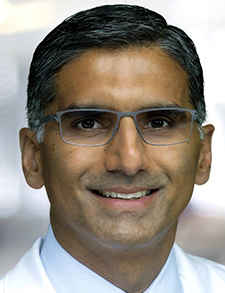
Dr. Soni
“Ultrasound has evolved quickly, especially with advances in portable devices and ultrasound applications for tablets and cell phones,” Dr. Soni said. “It’s a non-invasive modality that provides a lot of information rapidly. That can change the conversation at the bedside.” But using POCUS requires training and practice.
SHM offers a POCUS certificate of completion for learning its fundamentals, combining classwork, online learning modules, and a comprehensive assessment of skills and knowledge. Dr. Soni also helped draft several SHM position statements on POCUS.
“I represent a large group of hospitalists who are passionate about POCUS and active in SHM’s POCUS steering committee, SIG, and faculty group. We’ve been leading ultrasound training and integration for hospitalists over the past decade. Most of our POCUS faculty are champions for its use at their own institutions,” Dr. Soni said. “It’s rewarding as clinicians and educators to see the field progressing for hospitalists.”
From 2006 to 2008, ultrasound was included in the procedures for the hospitalist pre-course at SHM’s annual conference. Demand led to giving POCUS its own pre-course the following year. When registration requests exceeded the planned seats, Dr. Soni led the way to identify additional volunteer faculty, increase the number of sessions, arrange for loaned ultrasound machines, and gather needed supplies. The POCUS workshop consistently gets high evaluation ratings and is always sold out.
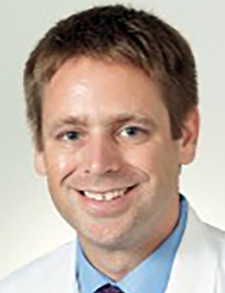
Dr. Gray
Adam Gray, MD, a hospitalist and clerkship director at the University of Kentucky, Lexington, serves on SHM’s physicians in training committee and devotes time to reviewing clinical vignettes and quality improvement abstracts for SHM’s annual meeting. He also co-edits the Future Hospitalist RoundUp blog on SHM’s members-only site, where he rounds up and edits articles submitted by medical students and residents sharing their experiences and perspectives—most recently around the pandemic.
“I enjoy and learn a lot from colleagues by reading the conference abstracts and blog posts,” Dr. Gray said. “I’m glad to help out, and it’s a great experience to learn all the interesting things being done around us in this field.” He also advises students and residents pursuing grant-funded quality improvement projects.
Building better science
Samir S. Shah, MD, MSCE, MHM is a pediatric hospital medicine and infectious diseases physician at Cincinnati Children’s Hospital Medical Center where he’s the director of the division of hospital medicine. Dr. Shah is also the editor-in-chief of the JHM. He says volunteer peer reviewers are essential to the journal’s ability to advance scientific knowledge and understanding of the field. “I view peer reviews as an important service to the journal and the society—but also for health care generally. It is instrumental for us to build better science, and to help authors improve the quality of their work.”
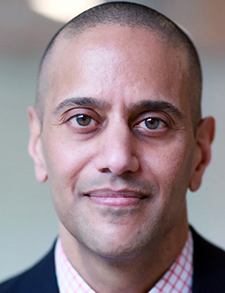
Dr. Shah
When an article is submitted to the journal, Dr. Shah determines if it’s likely to be published. If so, it is sent out for peer review by two to five expert reviewers. JHM keeps a database of individuals who have offered to do peer reviews, organized by their specialties. Nearly 400 of them wrote reviews in the past year, some multiple times. “For the journal, we could not be as successful without them. We couldn’t do it all ourselves or hope to cover all the domains of expertise with any degree of insight and nuance.”
Peer reviewers typically spend one to three hours on a review. “We ask them to focus on the importance of the work and its relevance to the field, along with three to four major and three to four minor critiques, all aimed at helping the author improve the manuscript. We may then ask for revisions. If we don’t end up using the article, the comments still help the author pursue publication elsewhere.”
Peer review typically is not taught in medical training. “We ask our peer reviewers if they would like to mentor folks. We do workshops on it at SHM.” The publication also works hard to celebrate its peer reviewers, Dr. Shah said. It identifies top reviewers based on the number and quality of their reviews. “We send them a certificate, and we encourage them to share this information with their mentors and department chairs.”
JHM also tries to promote its top reviewers on social media, tweeting their names and publicly thanking them, he said. “We’re always looking for ways to credit them and to offer as much recognition as we possibly can.”
Volunteers like Drs. Adhikari, Zipper, Soni, Gray, Shah, and hundreds of other SHM members are the reason the Society has not only grown but flourished, over the last 25 years. And it’s volunteers like them who will fuel SHM’s success for years to come.
Making a difference matters
Amira del Pino-Jones, MD is a hospitalist and associate professor, division of hospital medicine at the UCHealth University of Colorado Hospital in Aurora, Colo. She’s also the chair of SHM’s diversity, equity, and inclusion (DEI) committee and this year’s winner of the Diversity Leadership Award.
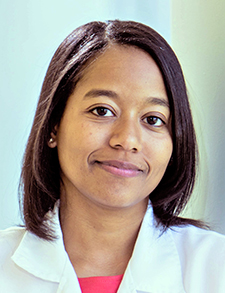
Dr. del Pino-Jones
When she’s not seeing patients, or teaching, advising, and mentoring medical students, she’s working on DEI initiatives for UCHealth’s Internal Medicine Residency Program and the Colorado Clinical and Translational Sciences Institute (CCTSI).
As the chair of SHM’s DEI committee, Dr. del Pino-Jones says she not only enjoys the role—“it’s been great as I’ve had the opportunity to work with other committee members…to help inform DEI efforts within SHM”—but says the DEI committee and SIG are important to SHM and “have been instrumental in helping define the mission and vision for DEI within the organization. We’ve helped develop tangible goals in DEI as it relates to creating an inclusive environment and integrating DEI into quality improvement, patient care, research, education, and professional development.”
The ultimate goal of any of SHM’s DEI efforts is referenced in the DEI SIG’s mission statement: “To this end, the Society of Hospital Medicine will work to eliminate health disparities for our patients and foster inclusive and equitable cultures across our care teams and institutions with the goal of moving medicine and humanity forward.”
Dr. del Pino-Jones said she volunteers on the DEI committee because “DEI should be interwoven into all we do. I thought this would be a wonderful group of people to work with to share ideas about DEI in hospital medicine and ensure that we are not all working in silos. This work is important but hard, and it sometimes takes a long time to see change. However, it is well worth it and I wanted to work with a group of people who were motivated and dedicated to making these changes happen.”
She encourages others to volunteer as well, saying it helps “remind me why we do what we do as health care professionals.”
While the pandemic showed the world the value hospitalists bring to the table, it also exposed the challenges hospitalists faced—both before and during the pandemic.
Dr. del Pino-Jones sees volunteering and getting involved in different aspects of organizations as a way to help provide more meaning and fulfillment to one’s life and to make a difference in the world.
Larry Beresford is a freelance medical journalist based in Oakland, Calif., a specialist in hospice and palliative care, and a long-time contributor to The Hospitalist.